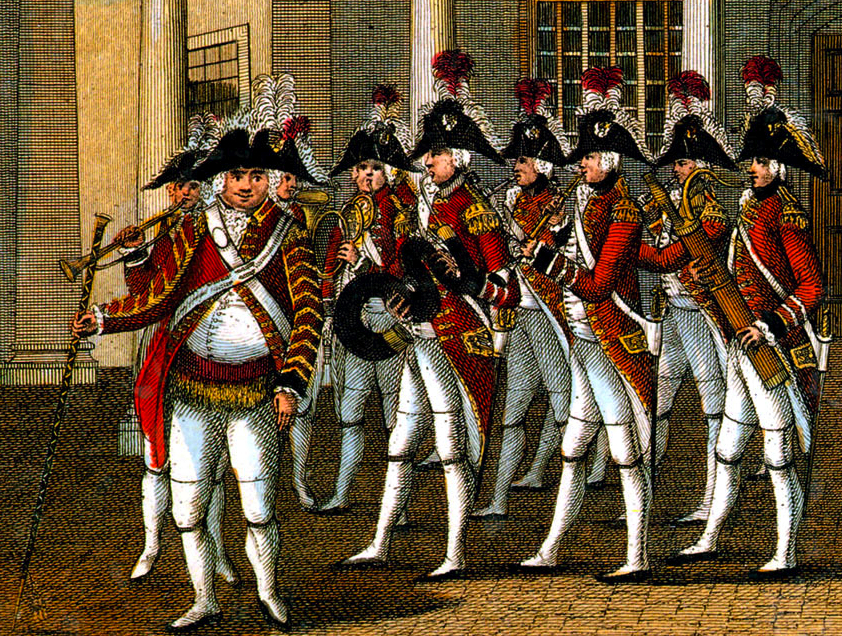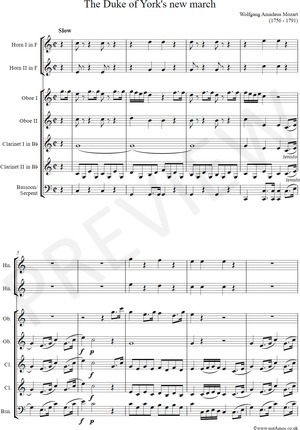 notAmos Performing Editions 1 Lansdown Place East, Bath BA1 5ET, UK +44 (0) 1225 316145 Performing editions of pre‑classical music with full preview/playback and instant download |
Oboe I part (PDF), €0.20 for unlimited copies Buy this item
Oboe II part (PDF), €0.20 for unlimited copies Buy this item
Clarinet I in Bb part (PDF), €0.20 for unlimited copies Buy this item
Clarinet II in Bb part (PDF), €0.20 for unlimited copies Buy this item
Horn I in F part (PDF), €0.20 for unlimited copies Buy this item
Horn II in F part (PDF), €0.20 for unlimited copies Buy this item
Bassoon Serpent part (PDF), €0.20 for unlimited copies Buy this item
Printable cover page (PDF), €0.00 for unlimited copies Download this item
Score, part(s) and cover page (PDF), €2.30 for bundled copies Buy this item
If you have any problem obtaining a PDF, please see our help page. If that does not resolve the issue, please click here.
Click on the illustration to display a larger version
For licensing/copyright information please click here
| Enquire about this score |
| About Wolfgang Amadeus Mozart |
| Full Catalogue |
| About us | Help, privacy, cookies |
| About Wolfgang Amadeus Mozart |
| Full Catalogue |
| About us | Help, privacy, cookies |
"The Duke of York's New March, as performed by His Royal Highness's Band, Composed by W. A. Mozart", London, c.1795. An anonymous arrangement (most likely made by C. F. Eley) for English military band (the passing resemblance to Harmoniemusik is coincidental). The Duke of York adopted the tune, "Non più andrai" from the Marriage of Figaro, specifically for the Coldstream Guards in 1805. It is still in use to this day, under the name "Figaro".
The instrumentation for oboes and clarinets, two horns and bass was a slightly extravagant but not untypical line-up in both military and civilian band music of the period. No mention is made of percussion but the march should presumably be reinforced by drums, possibly by exotica such as the fashionable Turkish Crescent, or "Jingling Johnny".
This march, entitled new, supplanted that originally written for the Duke of York with the same name.
The instrumentation for oboes and clarinets, two horns and bass was a slightly extravagant but not untypical line-up in both military and civilian band music of the period. No mention is made of percussion but the march should presumably be reinforced by drums, possibly by exotica such as the fashionable Turkish Crescent, or "Jingling Johnny".
This march, entitled new, supplanted that originally written for the Duke of York with the same name.

